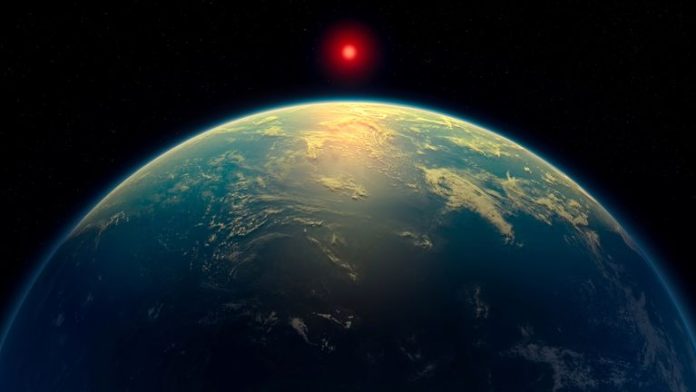Scientists working with the James Webb Space Telescope said they have found the most convincing evidence to date of the possible existence of life outside the solar system.
In the atmosphere of the exoplanet K2-18b, they found chemical compounds that are exclusively produced by living organisms on Earth – dimethyl sulfide (DMS) and dimethyl disulfide (DMDS). In the atmosphere of K2-18b, they are present in concentrations thousands of times higher than earth’s. On our planet, these gases are produced mainly by marine microorganisms such as phytoplankton. The researchers suggest that this planet could be a so-called “gycean world,” covered by a warm ocean with a hydrogen atmosphere where microbial life is possible.
“The only scenario that currently explains all the data obtained so far from JWST (James Webb Space Telescope), including the past and present observations, is one where K2-18 b is a hycean world teeming with life,” the study’s lead author, astrophysicist Nikku Madhusudhan of the University of Cambridge, said.
However, he urged caution, “We need to make some repeat observations and explore all sorts of other explanations.”
What is K2-18b?
K2-18b is an exoplanet with about 8.6 times earth’s mass and a diameter 2.6 times larger. It orbits a “red dwarf” (a very low-mass star) 124 light-years away, in the constellation Leo. The star is much dimmer and smaller than the sun, but the planet is located in the so-called habitable zone, a distance at which liquid water could theoretically exist on the surface.
K2-18b belongs to the class of sub-Neptunes – planets intermediate in size between earth and Neptune. Its atmosphere was studied with the help of the transit method: the telescope records the change in brightness of the star when the planet passes in front of it, and part of the light passes through the atmosphere and helps to determine its chemical composition.
First evidence of alien life
Earlier, the Webb telescope has already detected in the atmosphere of K2-18b methane and carbon dioxide – it was the first case of fixing carbon molecules in the habitable zone of another star. Now traces of DMS and DMDS have been added.
According to Madhusudhan, such values can not be explained without the involvement of biological processes – at least, based on the existing knowledge of science. The author of the study reiterated, to confirm the biological origin of the recorded gases, it takes several years of repeated observations and theoretical tests. Nevertheless, the probability that the detected signal is an accident or error is estimated at less than 0.3 per cent.
“We are a few years away from a possible answer to one of humanity’s oldest questions – are we alone in the universe? But so far it is premature to say that we have found life,” the scientist summarised.
